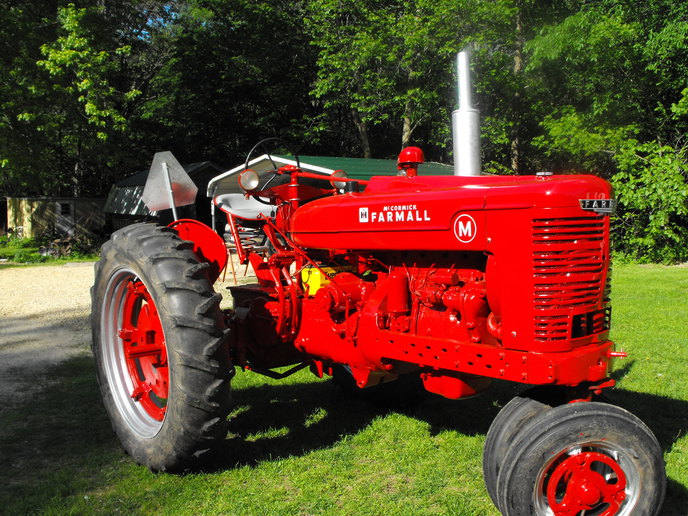Ok guys, I know you all are pretty knowledgeable about this kind of stuff, and after reading the recent thread about primers; I thought I might better ask while its on your mind.
After painting several IH tractors through the years (mainly to refresh them and make them proud to own workable tractors to last for many years), I have decided that I want to start putting a "better" paint job on them. At least try it out so I can look for a difference. I want to try and achieve a somewhat professional look.
Here's the run-down on what I've been doing and pictures to show the result I get.
#1) Take tractor apart enough to do a good looking paint job. Remove sheetmetal, remove radiator on some, and remove attachments, alternator, starter, seat, and all wheels and tires.
#2) Spray tractor down with Easy Off Oven Cleaner & steam clean with high pressure hot water machine. Sand some flaky paint or rough spots on sheetmetal if necessary by hand or with orbital sander.
Scrape some excessive gime & Repeat washing with hot water about 2 more times until it is clean.
#3) Mask off certain areas, and paint exhaust manifold, etc. beforehand and covering with paper to prevent overspray of primary color.
#4) Mix the IH Red Acrylic Enamel paint with medium hardener & reducer and start applying paint to tractor. I put about 2 coats of paint on the tractor and sheetmetal. Maybe a little more on the sheetmetal after I get through and have paint leftover. The paint is mixed from the local Automotive Paint Supply Store and is around $120 a gallon.
#5) About 2 to 3 days later, I reassemble the tractor and get everything together. About 2 to 3 days after that (roughly a week after paint), I apply the decals.
#6) Here is the result. It looks good, but definitely not show quality. I understand pictures are hard to tell.
* For my next tractor (Farmall 140 & Ford 641 Powermaster), I am wanting a very nice SLICK paint job. At least the sheetmetal.











After painting several IH tractors through the years (mainly to refresh them and make them proud to own workable tractors to last for many years), I have decided that I want to start putting a "better" paint job on them. At least try it out so I can look for a difference. I want to try and achieve a somewhat professional look.
Here's the run-down on what I've been doing and pictures to show the result I get.
#1) Take tractor apart enough to do a good looking paint job. Remove sheetmetal, remove radiator on some, and remove attachments, alternator, starter, seat, and all wheels and tires.
#2) Spray tractor down with Easy Off Oven Cleaner & steam clean with high pressure hot water machine. Sand some flaky paint or rough spots on sheetmetal if necessary by hand or with orbital sander.
Scrape some excessive gime & Repeat washing with hot water about 2 more times until it is clean.
#3) Mask off certain areas, and paint exhaust manifold, etc. beforehand and covering with paper to prevent overspray of primary color.
#4) Mix the IH Red Acrylic Enamel paint with medium hardener & reducer and start applying paint to tractor. I put about 2 coats of paint on the tractor and sheetmetal. Maybe a little more on the sheetmetal after I get through and have paint leftover. The paint is mixed from the local Automotive Paint Supply Store and is around $120 a gallon.
#5) About 2 to 3 days later, I reassemble the tractor and get everything together. About 2 to 3 days after that (roughly a week after paint), I apply the decals.
#6) Here is the result. It looks good, but definitely not show quality. I understand pictures are hard to tell.
* For my next tractor (Farmall 140 & Ford 641 Powermaster), I am wanting a very nice SLICK paint job. At least the sheetmetal.

















